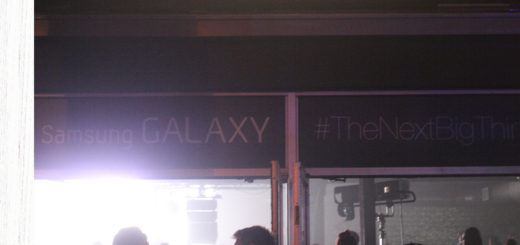Alas, Poor Peanut; I Knew Him Well
My relationship to advertising is complicated, and I know exactly why. I grew up around advertising; my father was an account executive at an agency called Carden & Cherry for most of my early years. As a result, I don’t have the knee-jerk hatred of advertising common to my peers (by which I mean both fellow progressives and Gen-Xers). I appreciate it as a delicate balance of art and commerce, I delight in effective ad campaigns, I recoil at terrible ones.
Also—and this may have a lot to do with the sheer volume of television I’ve consumed in my lifetime—I love the characters and mascots common to advertising. If I am in an antique store, for instance, and there is a mint-condition Louis XIV bed, but there are mint-condition Snap, Crackle, and Pop stuffed dolls sitting on it, I will be very excited about…the dolls. Yes, I get that they are the creation of various and sundry Don Drapers, extant only to sell a product. I don’t care, and never have. The imaginary world in my childhood mind was filled with folks animated and anthropomorphic; Bugs Bunny and C-3p0 rubbed elbows with Tony the Tiger and Mrs. Butterworth. That was how I rolled, full stop.
One of my favorite advertising mascots has always been Mr. Peanut, the spokes-legume for Planters, this despite a glaring piece of situational irony: I am allergic to any and all nuts. Allergies be damned, though, when confronted with a jaunty anthropomorphic peanut in a top hat, a monocle (one of the greatest accessories in fashion history), and spats. He’s a great-looking, well-designed character, and he lends himself well to merch. When I was a wee lad, I had a dark blue plastic Mr. Peanut drinking mug; chocolate milk sipped from such a chalice is all the sweeter. My dad, the adman, kept a Mr. Peanut pen among the pens in a beer stein he had on his desk; he didn’t use it. It was for show, serving about the same purpose as, say, the stuffed moose head in a Shriner fez adorning the wall at a TGI Fridays. I mentioned antique stores a bit ago; I guarantee you that any antique store you walk into will contain at least one tchotchke in the shape of Mr. Peanut.
Thus, I was very displeased when Mr. Peanut began to trend on social media this week, for a very peculiar reason: he’s dead. Isn’t he fictional? Isn’t it odd that a talking peanut with a monocle could be dead? Yes to both, but the source is hard to beat: the Twitter feed for Planters Peanuts. Or, as it is now known, The Estate of Mr. Peanut:
Because this was announced on Twitter, the responses have been exactly what we’ve come to expect when brands engage in shenanigans on that platform. Other brands, for instance, have joined in the mourning; click here for my favorite example.
Individual Twitterati have joined in as well, some actually mourning the loss, some building shrines (flowers, jars of peanuts, etc), some perpetual killjoys pointing out that Heinz Kraft, the brand-heavy conglomerate which now owns Planters, doesn’t pay income taxes, so who cares.
The AV Club ran an article about his passing, and I must admit I enjoyed the narrative liberties they took, including backstory:
For over a century, Planters was more than Mr. Peanut’s employer; it was his home. His birth parents were among the victims of the Titanic’s tragic maiden voyage in 1912. Following their death, Peanut lived with a series of relatives in Spain, Virginia, and Florida before he was adopted by Planters in 1916. The details of that adoption remain sealed, but authorities have petitioned the courts in Florida to release the documents, which may contain crucial information related to the investigation. Over the decades, many of Peanut’s most vocal and loyal fans strongly suspected that the icon was being held against his will, forced to participate in commercials and parades, and lend his likeness to myriad Planters products without proper compensation.
Further research led me to discover that the iconic legume’s demise was, in fact, caught on film, and is actually part of a commercial that Planters will air during the Super Bowl. Actually, they’ve already released the ad in which he dies; it will air during the game, as well as a second ad depicting Mr. Peanut’s funeral.
From a purely utilitarian, dollars-and-cents viewpoint, this act of mascoticide has proven fruitful so far. The advert has been viewed 3 million times on YouTube, and a marketing research firm expects the campaign to ultimately yield $13.7 million in “equivalent brand value”, whatever the hell that is. From a critical viewpoint, it’s understandable once you hear from Mike Pierantozzi, who told NBC News that the whole affair is a commentary on how social media reacts to celebrity death. Indeed, my writing this very article is an indice of the campaign’s success, as the Planters brand has won space in what Adbusters magazine would call my “mental landscape”, despite the fact that I will never be in the market for their product.
That having been said, I, to quote every parent ever, just don’t know about this. The mascot for a company is its humanity (even when it isn’t human); it’s the friendly, well-known friend, the representative of some trusted part of your life. I know what I’m talking about here, and it has nothing to do with my dad’s line of work. My first job, at the long-lamented Opryland USA, was dressing in costume versions of General Mills cereal mascots (I specialized in Lucky Charms and Count Chocula) and entertaining children. In that job, countless children walked up to me, hugged me, and said, “I love you”. They loved me (or whom I appeared to be), and their only interaction with me had been television commercials. In other words, what started as a simple attempt to sell a product became something that fostered love—and so what if it was love as expressed by a small child who doesn’t know any better? The really successful, iconic mascots and characters in advertising do more than sell their wares. They foster affection, they foster genuine warmth; right or wrong, cynical or romantic, they are something to believe in, to be believed in. Planters may be on people’s minds for a moment, but what happens when they’re remembered as the guys who killed their own mascot, as the guys for whom loyalty and trust (even when those qualities are shared with someone who doesn’t exist) mean nothing?
I’m fully willing to concede that these may be the rantings of a grumpy old man who sees advertising in a way that most of the world no longer does. I’m a Gen-Xer, I’m getting used to that. But here’s the thing: I was Count Chocula in 1988 and 1989. Those little kids who hugged me are now called Millennials. They are the hot and as-yet inscrutable demographic, and I know from experience how they can react to mascots. I’m not sure Planters does know. They’re about to find out.
PS: The cold open for this past Saturday Night Live featured a cameo from Mr. Peanut!






















